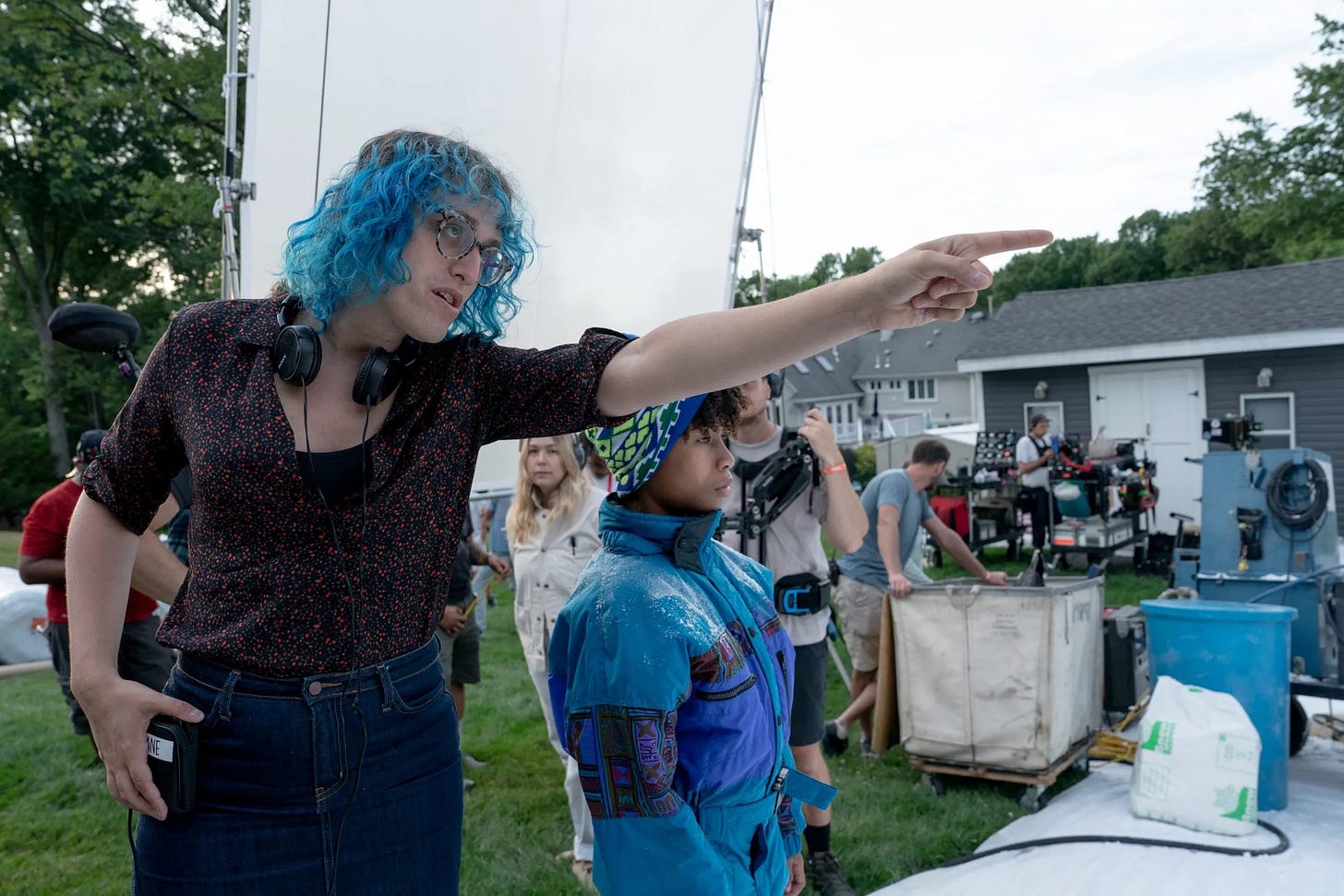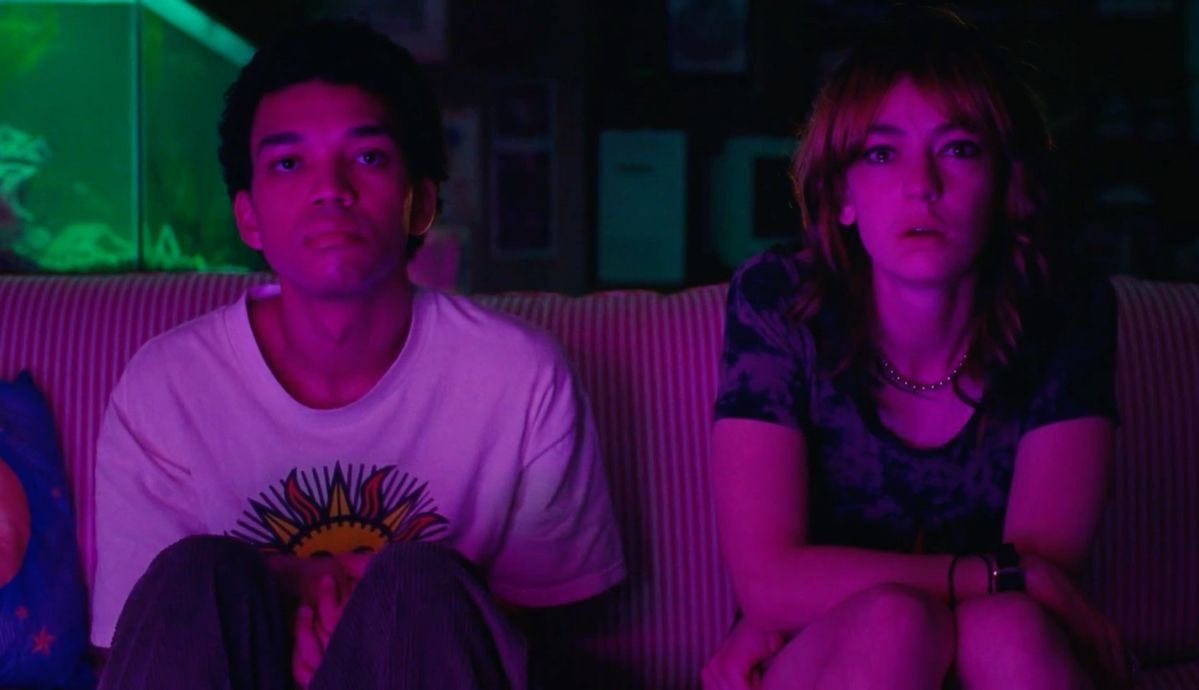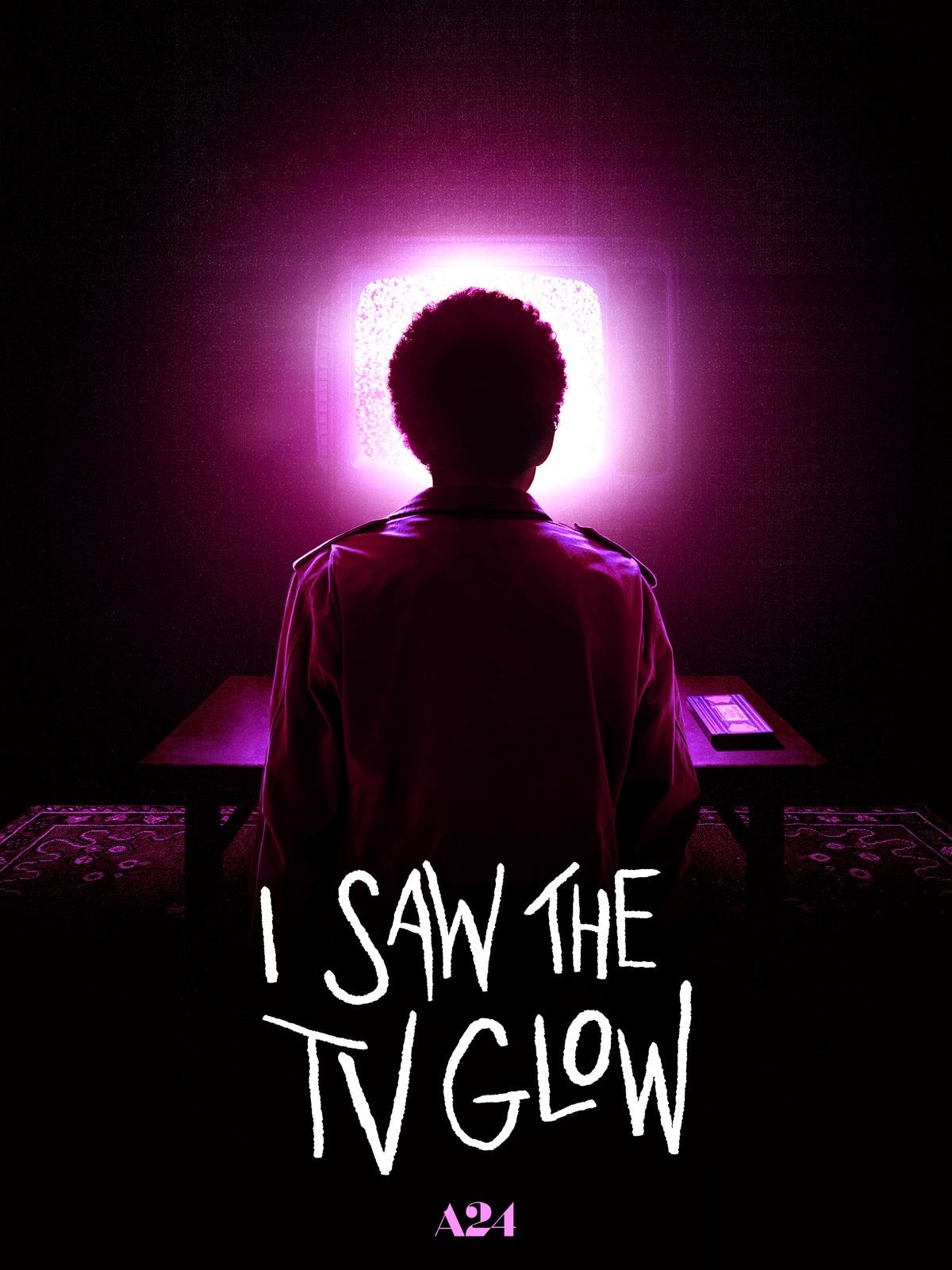I saw the TV Glow directed by Jane Schoenbrun: Some Thoughts
I Saw the TV Glow is Jane Schoenbrun’s second feature-length film.
Whereas Schoenbrun’s first film, We’re all Going to the World’s Fair, depicted a protagonist searching for connection, meaning, and community from an online creepypasta, I Saw the TV Glow explores the connection, meaning, and community we find through tv shows, namely how we can mythologize our lives based on our favorite shows. However, the film explores a much darker perspective, showing how people can utilize television as a coping mechanism to deal with trauma and unresolved tension.
Owen, the protagonist, is isolated and dejected in the world. Upon meeting Maddy, a teen in a similar social position, both bond over a show called The Pink Opaque.
Early in the film, Maddy, seeking to escape her abusive stepfather, comments that if she doesn’t leave the town they live in, she will die. Unfortunately, from a figurative standpoint, this is exactly what happens to Owen at the end of the film.
Maddy ends up leaving town, The Pink Opaque is cancelled at the conclusion of its fifth season, but Owen is unable to leave with Maddy, opting to stay in the town because he is afraid of the repercussions.
Years later Owen and Maddy cross paths again, and Maddy suggests that she’s been able to enter the world of The Pink Opaque, assuming the role of Tara, her favorite character from the show. Maddy claims to have uncovered that their “real world” is not so but instead the “Midnight Realm” of the show. She encourages Owen to come with her, so he can escape the Midnight Realm and enter the world of The Pink Opaque, which would continue with a sixth season. In The Pink Opaque, Owen would assume the role of Isabel, a character described as being cautious and unsure of herself compared to the more daring Tara. However, Owen is again unable to answer Joseph Campbell’s “Call to Adventure.”
The metaphysical dimension of the film was my favorite part as it incorporated some Gnostic themes.
In Gnosticism, there is the concept of the Demiurge, which derives from Platonic thought. In Plato’s Timaeus, there is mention of the Demiurge as the creator of the universe.
The Demiurge, being a “craftsman” figure that has fashioned the material world, adopts an antagonistic character in Gnosticism. Thus, in layman’s terms, the Demiurge has fashioned the physical world as a flawed version of the divine realm, and the Demiurge has imprisoned aspects of the divine in materiality.
In The Pink Opaque, the villain of the show is Mr. Melancholy, a character with the appearance of the moon (similarly stylized after George Méliès’ 1902 film Le voyage dans la lune) who has created the Midnight Realm, which is described as a snow-globe where Mr. Melancholy traps his victims. The snow-globe shown in the film has a figure of Owen sitting on a couch while glued to his television screen. The “divine” in the material is later referenced near the end of the film in a scene where a much older Owen cuts his chest open in front of a mirror.
In the end, Owen opts to live a “normal” life in the town he grew up in. It’s a town he never felt a part of, but because of fear, he wasn’t able to break free from its grasp.
In his later years, Owen is shown as a sickly man, working at a family entertainment center and still isolated and dejected in the world. It’s also interesting to note that the final episode of The Pink Opaque, having ended with 5 seasons, depicted Mr. Melancholy capturing Isabel, a character resembling Owen in personality, and subsequently killing her.
After Maddy disappeared the second time, she is never heard from again, and similar to Owen in his later years, the viewer questions if what Maddy experienced was real. Was Maddy right? Could Owen have escaped the Midnight Realm?
“What if she was right? What if I was someone else? Someone beautiful and powerful? Buried alive and suffocating to death on the other side of a television screen?”
The performances from Justice Smith & Brigette Lundy-Paine were gripping, capturing the heartbreak that can come with being a teenager and wanting to establish an identity. As well, the film is visually stunning. Schoenbrun makes some creative decisions regarding the camera work, editing, sound design, and the movie’s overall aesthetic to blur the lines between fact and fiction. It’s a strong sophomore effort that both calls for subsequent viewings and piques my interest at what’s to come in Schoenbrun’s career.
Do you have a show that’s your Pink Opaque? If so, what is it? How did it inspire or influence you?






